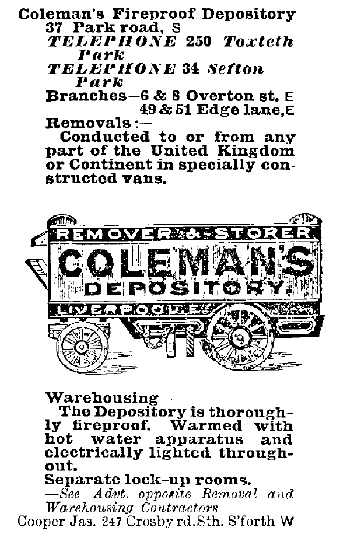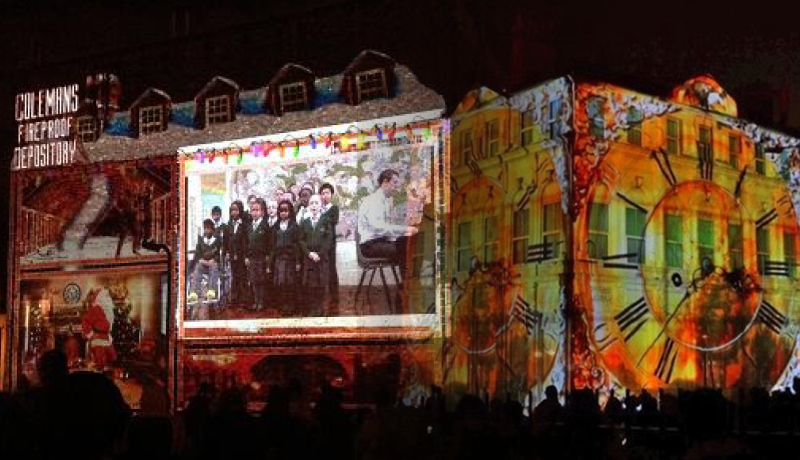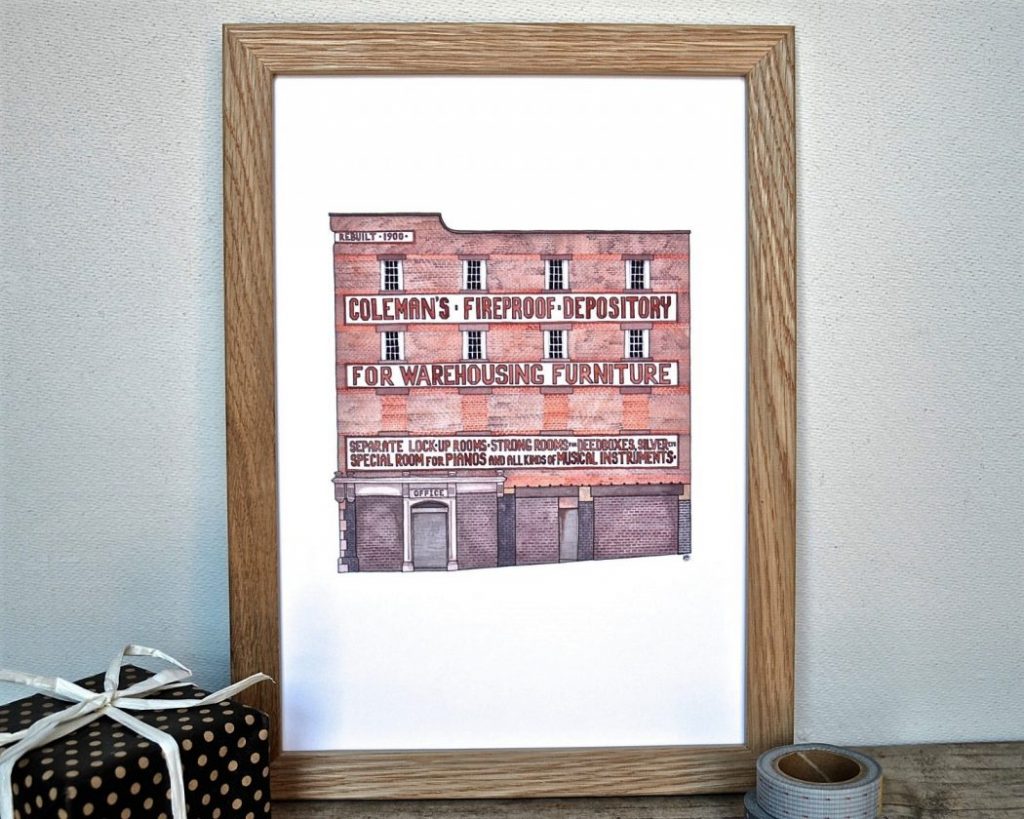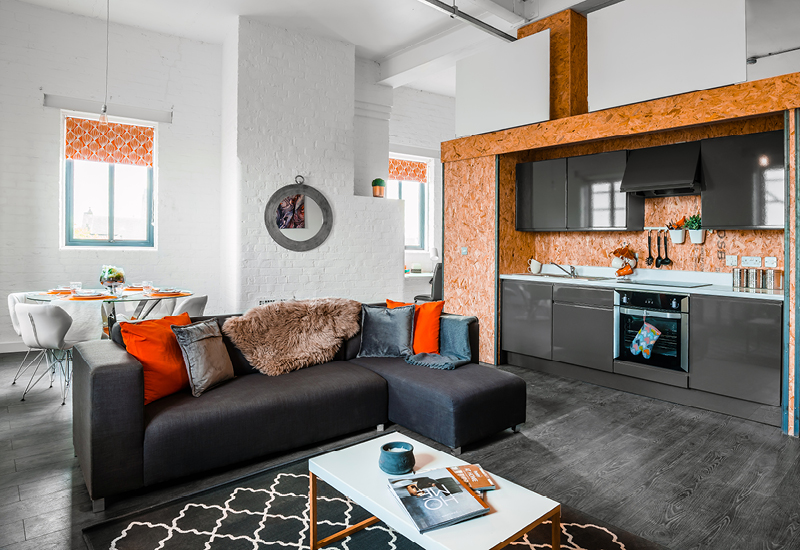A Look into The History of Coleman’s Fireproof Depository
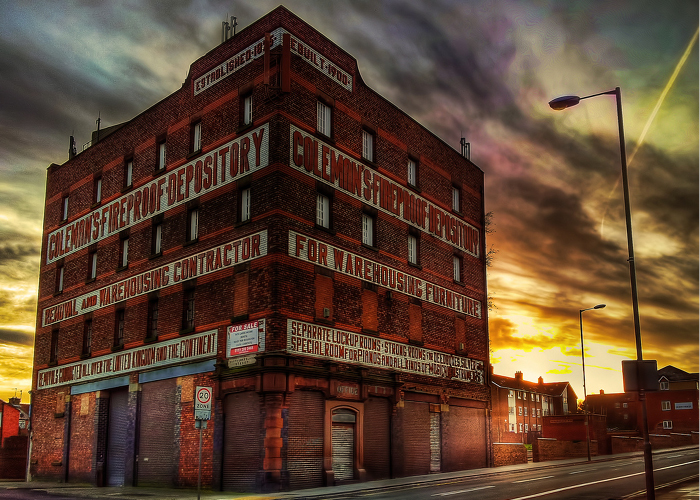
Iconic, enduring, eminent. These are just a few words that describe this historic building. Ever photographed, locally recognised and a muse to various artists, Coleman’s Fireproof Depository has in its own right (and almost by accident) become a strong part of everyday living in Liverpool.
But how? What life has it lived? If only walls could talk! Already well over 116 years old, Aspen Woolf takes a look into this iconic building’s history.
The Beginnings
Where its story started was a bit of a tricky one to decipher. Mainly due to not having enough records at hand. What we did find was that Coleman’s Fireproof Depository was initially established circa 1875 as a ‘cart owners and furniture removers’ business by proprietors George Coleman & Sons, and then later by Edward L. Coleman.
No one really understands why the current building has the legend ‘Rebuilt 1900’ on its side. No buildings were listed on the current site up until 1902 when Coleman’s Depository was first recorded at 37A Park Road as a ‘furniture remover’. And before that, a map of Liverpool in 1863 by John Dower shows a stone quarry on the plot on which the current Depository stands.
Whilst we never found out why it specifically says ‘rebuilt’ on its side, we did find that at least the 1900 date on the building does ring true as The Liverpool Mercury in 1899 held the following advertisement:
“OFFICE BOY (smart) Wanted at once; age about 14: residing neighbourhood Edge-Hill preferred – Apply Coleman’s Depository, Overton-street, Liverpool.”
Plus, just a few years later the 1902 Gores Directory of Liverpool listing held a rather grand advertisement about the business reading:
“WAREHOUSING. The Depository is thoroughly FIREPROOF, having been specially erected for the Storage of Furniture, Musical Instruments, Pictures, Wines, Carriages, and Luggage and is open for inspection daily, 9 a.m. to 6 p.m. (Sundays excepted). SEPARATE LOCK UP ROOMS. SPECIAL ROOM FOR PIANOS. STRONG ROOM FOR PLATE, DEED BOXES, &c.”
The ‘fireproofing’ was probably brought in due to the fact that fires would break out relatively easily back then, especially in industrial cities.
For about 10 years after that we can find ads dispersed within Gore’s Directory of Liverpool & Birkenhead. All featuring their grand cart and highlighting their removal services, fireproofing, electric lighting, and heating features!
The latest historical find we could uncover was another ad 40 years on, this time from The Liverpool Daily Post back from 1945, and it reads:
“REMOVAL AND WAREHOUSING. COLEMAN’S DEPOSITORIES, LTD. 37 PARK RD, & 1 GARMOYLE RD., LIVERPOOL.
Long-distance removals by Road, Rail, or Sea loaded and delivered by expert men.
WAREHOUSING IN SPECIALLY-BUILT DEPOSITORIES WITH STRONG ROOM AND PRIVATE LOCK-UP ROOMS.
Packing and Forwarding Home or Abroad. ESTIMATES FREE. PHONE ROYAL 7535 m54625”
The Liverpool Riots
There isn’t really any further information on the building after the 1940’s. Yet 40 years later it made headlines once again. This time for something quite ironic though as it was set on fire during the Liverpool Riots in 1981. Nonetheless, true to its word it couldn’t be taken down and was one of the few buildings that survived that tumultuous time.
Following the riots, like many other parts of Liverpool, it was left empty.
Recent Uses
Even though it was abandoned for more than 30 years, it still left its mark on the local area. Just a few years ago the Coleman building sprung back to life as a backdrop for a stunning Christmas show. For a time, it played as the biggest outdoor cinema in the country. Images of the L8 area was interspersed with film of carol-singers – all projected onto the four-storey building.
The light show was staged by Illuminos, who specialise in creating inventive and memorable artworks. Their recent work included ‘Treasured’, the Titanic commemoration shown at nearby Liverpool Cathedral.
The light show was one in a series of initiatives to celebrate Liverpool 8 and its long history, including a new heritage trail and the siting of a model of the Titanic in the area.
It’s even made it into print as one of Becka Griffin’s favourite pieces. Becka is a local artist in Liverpool that specialises in graphic arts, illustration and drawing, and most known for her illustrations of local landmarks/houses.
“The print is taken from a watercolour and ink image which took days and days to complete, carefully painting each individual brick. The original hangs proudly in my dining room, and it’s just my absolute favourite painting!” – Becka Griffin
Present Day
Today, Coleman’s Fireproof Depository is definitely one of the most recognisable buildings in Liverpool. The charismatic lettering still stands out and is commented on year-on-year. Mainly thanks to the original signage being made up of brickwork instead of traditional signs, something that has worked in its favour for over 100 years now as it has barely faded.
Its been a long time since its fireproof vaults were used for their intended purpose, but soon it’ll open its doors once more to locals. Giving them the chance to make use of it for a second time – as their own home.
A report by council planning experts says that the former warehouse is not listed as a designated heritage asset, but describes it as “something of a local landmark”.
Sam Tumilty, managing director of Liverpool City Lets said: “We are delighted to be involved in such a unique and exciting development. Liverpool’s famous skyline is famous for a reason, we have a huge number of beautiful buildings that have made our city what it is today and this historic building has stayed empty for too long.
“After seeing the plans for the building, and working with Maddison Develop previously, I know it will be an instant hit. We look forward to offering these spacious luxury apartments in such an iconic building to the residents of Liverpool.”
The Future
The proposal to revamp the building to house 27 loft style luxury apartments was gladly accepted, concluding that it would be “bringing an iconic landmark back into use.”
The rooftop will be extended and there will be cycle and bin storage plus on-street parking. Original features such as the iconic brick lettering on the outside of the building will be restored and retained, along with its 100-year-old goods lift and a number of prominent iron doors.
Inside, the original brick work, which has been painted over, will be returned to its former glory, while iron pillars will further add to the industrial style.
In just a few months Coleman’s Fireproof Depository will be brought back to its former grandeur. The renovations will be complete in Q2 2017 and Aspen Woolf couldn’t be prouder to be able to offer this unique and charismatic building to the open market.
If you’re interested in purchasing a property with a unique piece of history attached, or you’re just curious to see what it looks like nowadays, then head on over to our investment page – Coleman’s Fireproof Depository.




